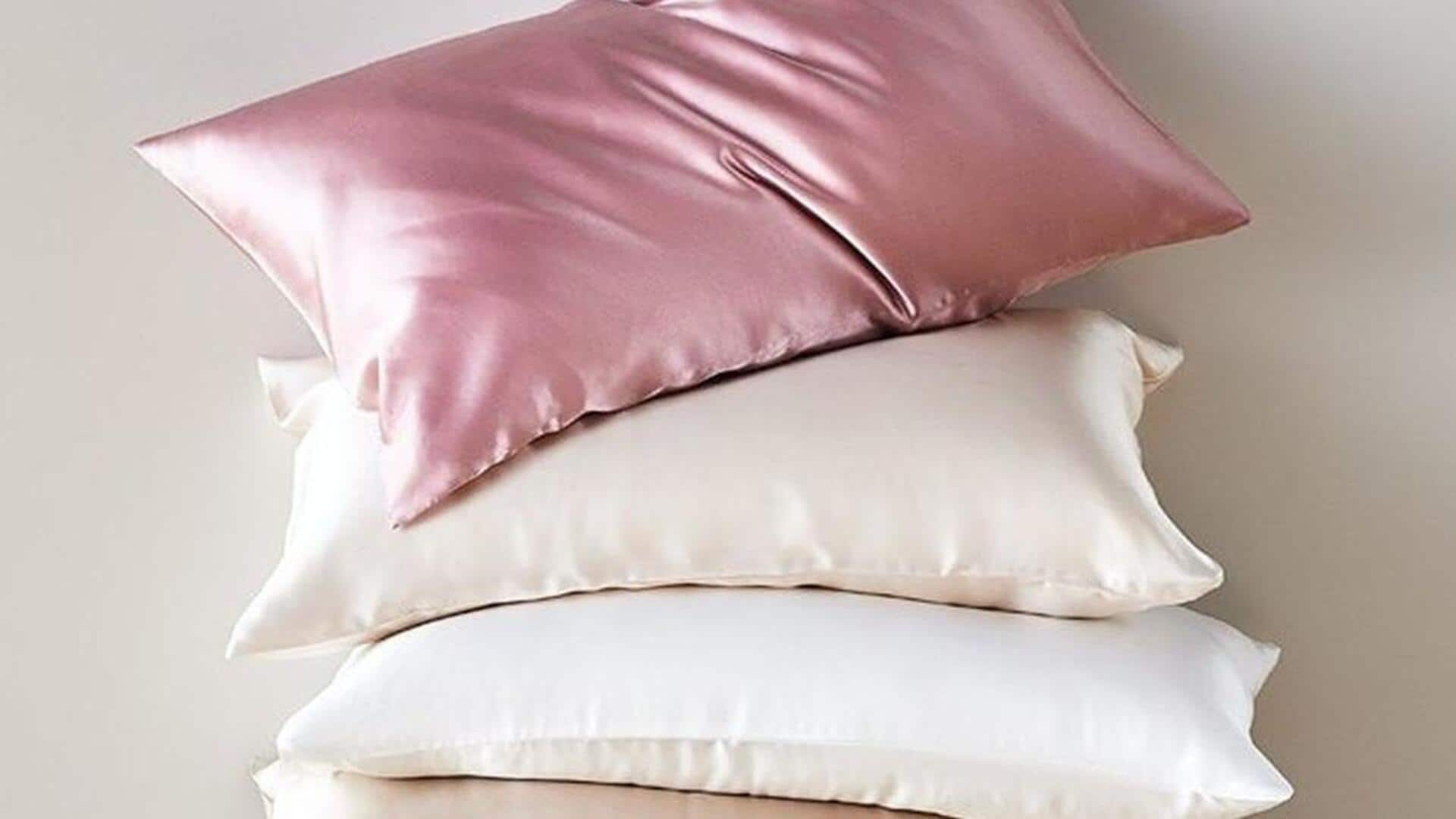
Silk pillowcases: Beauty secret or a clever marketing myth?
What's the story
Silk pillowcases are often hailed as the ultimate beauty secret for flawless skin, with claims ranging from wrinkle prevention to maintaining skin hydration.
But are these assertions rooted in reality, or are they just clever marketing tactics?
Time to separate fact from fiction! Let's dive into the world of silk pillowcases and see what science has to say about their impact on our skin.
Myth 1
No more wrinkles with silk?
The claim that silk pillowcases can prevent wrinkles is not backed by science.
While silk may minimize skin friction, there's no proof it can prevent wrinkles or have a major influence on aging.
Genetics, sun damage, and lifestyle choices play a much bigger role in aging than the material of your pillowcase.
Myth 2
Silk for superior hydration?
One widely circulated claim is that silk pillowcases benefit your skin by absorbing less moisture compared to cotton, therefore helping to keep your skin hydrated.
While silk is indeed less absorbent, the benefit to skin hydration from this difference is negligible.
A good skincare routine and drinking plenty of water are much more effective ways to ensure your skin stays moisturized than switching your pillowcase material.
Myth 3
A cure for breakouts?
Some people claim silk pillowcases help prevent acne because they're hypoallergenic and resist bacteria. But there isn't much scientific evidence to back this up.
The most important thing is to keep any pillowcase clean by washing it regularly. This will help prevent breakouts.
Silk may feel luxurious, but it doesn't offer significant skin health benefits. Stick to proven skincare practices for a clearer complexion and to fight signs of aging.